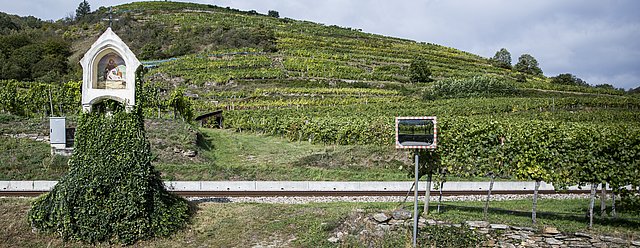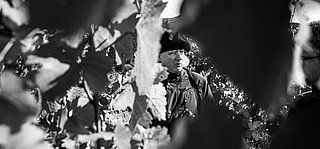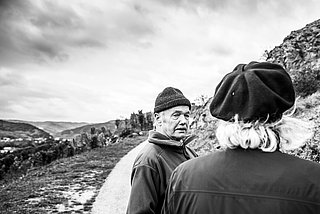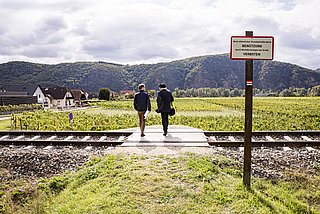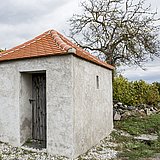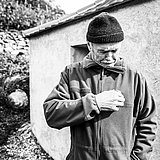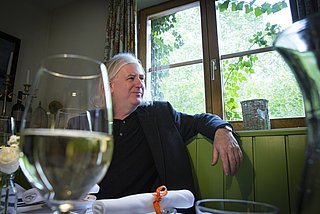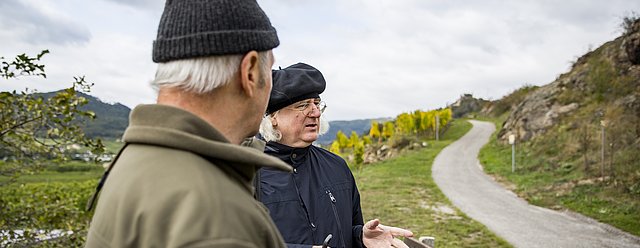
Longing for Rituals
Historian and wine writer Johann Werfring is in the midst of writing a new book about Austrian wine customs. The Wachau has more than one story to tell.
It’s October, and the wind is whistling about the Höhereck hill above Dürnstein. Johann Werfring is doing research here. He has already collected and recorded customs from all over Austria. Now his research has brought him to the Wachau’s Hiata, to their huts and the prominent stars marking their territory. One of the those with a lot to tell about the subject is Anton Steiner.
He was one of the last to do duty as a Hiata in the hut atop the Höhereck hill. His main job? To keep the summer tourists from thinning out the grapes before the harvest. Hiata, by the way, comes from the German hüten and means someone who keeps a lookout.
Five-shilling fine for a grape
Beginning in September and until the end of the harvest, the Wachau’s Hiata would watch over the vines, fruit trees and vegetable patches; most vintners at the time were in fact mixed farmers. Anyone caught pilfering would have to pay five shillings (about 50 eurocents) for each grape. The fine for picking fruit or vegetables was two shillings. As a Hiata, you had to be tough. Anton Steiner, like most, had nothing to help him enforce the rules – except his Hiata badge. “Later we were very glad to get the first walkie-talkies,” he says now.
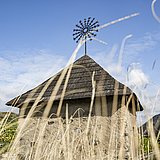
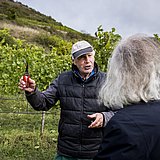
“You can’t but notice the Hiata stars in the Wachau. Kids even used to make them in crafts at school,” Johann Werfring reports from his research. Instantly, you grasp how much of an historian the man is. Even though he earns his daily bread (or better: his daily wine) as a writer. It is almost 20 years now since Johann Werfring began writing – among other things a wine column – for the newspaper Wiener Zeitung. At the same time he has often written books. His interest in the Wachau centres on customs and rituals marking feast days, such as the Kronentanz, a type of folk dance.
From cuisine to customs
His newest book, about Austrian wine customs, will be published in 2020. With the content all but completed, he is still weighing a fitting title. “With my columns, I sometimes need longer for the title than to write the actual column,” the journalist reports with a grin. After writing over 2,500 columns, this man obviously knows what he’s talking about. The focus is often wine. But also the Wachau’s landscapes and architecture fascinate him.
For someone like me – born in Burgenland –
the landscape of the Wachau seemed all but exotic at first.
Wine means fine dining, so we make a visit to the Prandtauerhof restaurant and the Holzapfel family in Weißenkirchen. Johann Werfring equally appreciates the Wachau’s culinary delights. He has even written a cook book: Das Österreichische Weinkochbuch (Austrian Wine Cook Book), co-authored with Viktor Siegl. Which of the many dishes does he recommend to accompany a Wachau wine? “You simply must try the chicken schnitzel with apricot and Riesling chutney. The recipe is easy to follow, and with Marille (apricot) and Riesling wine as the main ingredients, in the Wachau there is nothing more fitting.”
